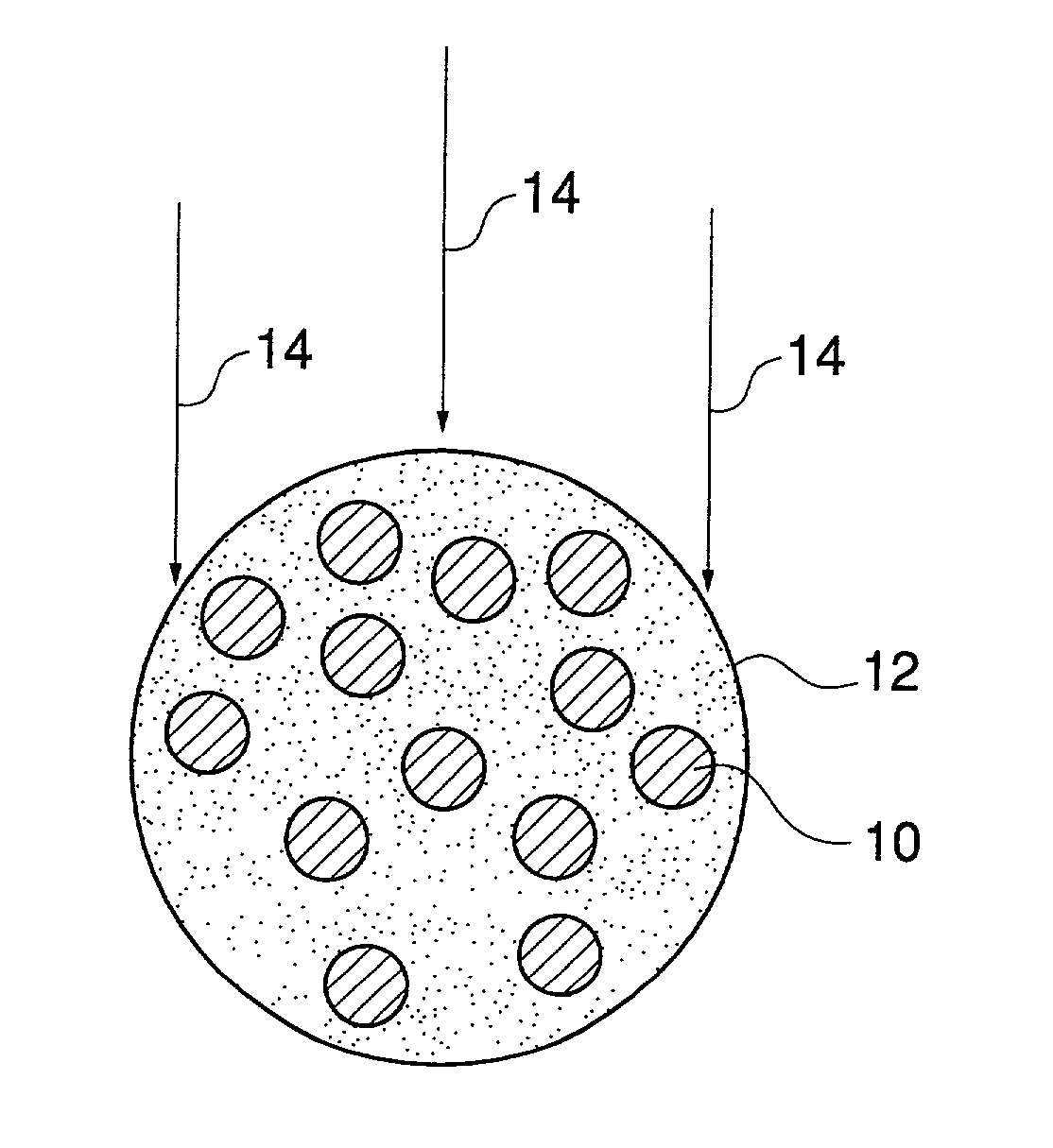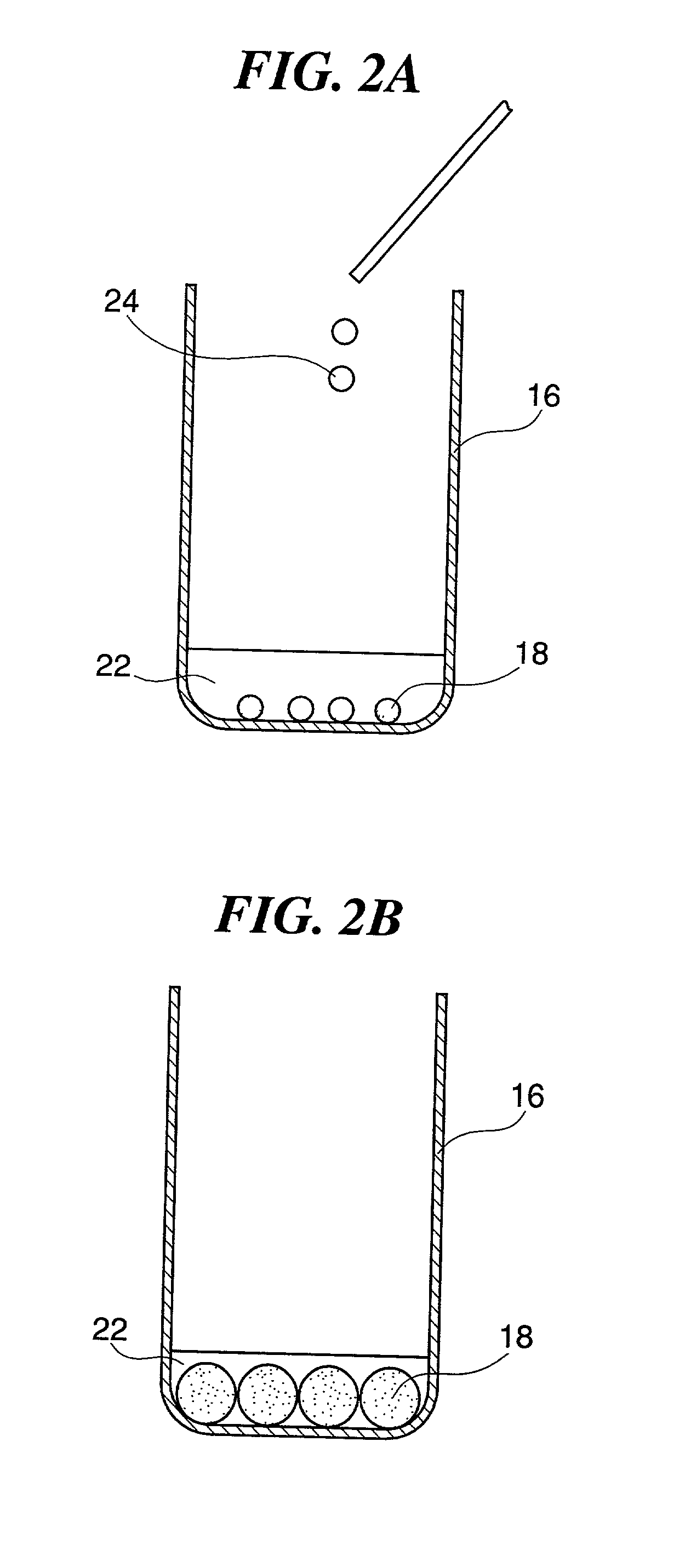Sensor material, sensor and detection method for bio-substance
a biosubstance and sensor technology, applied in the direction of positive displacement liquid engines, instruments, glassware, etc., can solve the problems of large working space required, poor sensitivity, and high cos
- Summary
- Abstract
- Description
- Claims
- Application Information
AI Technical Summary
Problems solved by technology
Method used
Image
Examples
example 2
[0138] Preparation of Sensor Material
[0139] Used as a light modulation material was 2.6 g of phthalocyanine blue pigment (made by Dainichiseika Colour & Chemicals Mfg.) and the material was added into 20 ml of distilled water including 0.8 g of sodium dodecyl sulfate and the additives were uniformly dispersed by an ultrasonic method into a mixed solution. Added into the mixed solution were 3 g of sodium acrylate and 3 g of acrylamide as main monomers, and 0.03 g of a methylene bis-acrylamide as a cross-linking agent and the resultant mixture was dispersed using a planetary mill for 1 hour to prepare a reaction solution.
[0140] Nitrogen gas was blown into the resultant reaction solution for 5 minutes or more to sufficiently remove dissolved oxygen therein. Three liters of a toluene solution in which 9 g of stearyl alcohol was dissolved was added into a separable flask containing the reaction solution on which nitrogen substitution had been performed. Thereafter, the reaction solution ...
example 3
[0148] Preparation of Sensor Material
[0149] Prepared as described below was a stimulus-responsive high polymer gel including glucose oxidase, catalase and a light modulation material.
[0150] Used as a light modulation material was phthalocyanine blue pigment (made by Dainichiseika Colour & Chemicals Mfg.) and used as an enzyme were glucose oxidase and catalase. Added into 20 ml of a distilled water were 2.6 g of phthalocyanine blue pigment and 0.8 g of sodium dodecyl sulfate and the additives were uniformly dispersed by an ultrasonic method into a mixed solution. Added into the mixed solution were 2 g of sodium acrylate and 0.8 g of dimethylaminopropyl methacrylamide as main monomers, and 1.2 g of glucose oxidase and 0.06 g of catalase as enzymes and 0.03 g of methylene bis-acrylamide as a cross-linking agent, and the resultant mixture was dispersed using a planetary mill for 1 hour to prepare a reaction solution.
[0151] Thus obtained reaction solution was treated in a similar manner ...
example 4
[0160] Preparation of Sensor Material
[0161] Used as a light modulation material was 2.6 g of phthalocyanine blue pigment (made by Dainichiseika Colour & Chemicals Mfg.) and the material was added into 20 ml of distilled water including 0.8 g of sodium dodecyl sulfate and the additives were uniformly dispersed by an ultrasonic method into a mixed solution. Added into the mixed solution were 2 g of sodium acrylate and 0.8 g of dimethylaminopropyl methacrylamide as main monomers, and 0.03 g of a methylene bis-acrylamide as a cross-linking agent and the resultant mixture was dispersed using a planetary mill for 1 hour to prepare a reaction solution.
[0162] Thus obtained reaction solution was treated in a similar manner to Example 2 and thereby there was prepared stimulus-responsive high polymer gel particles including a light modulation material.
[0163] Thus prepared stimulus-responsive high polymer gel particles were separated and washed with distilled water repeatedly. Thereafter, the p...
PUM
| Property | Measurement | Unit |
|---|---|---|
| volume ratio | aaaaa | aaaaa |
| volume average particle diameter | aaaaa | aaaaa |
| particle size | aaaaa | aaaaa |
Abstract
Description
Claims
Application Information
 Login to view more
Login to view more - R&D Engineer
- R&D Manager
- IP Professional
- Industry Leading Data Capabilities
- Powerful AI technology
- Patent DNA Extraction
Browse by: Latest US Patents, China's latest patents, Technical Efficacy Thesaurus, Application Domain, Technology Topic.
© 2024 PatSnap. All rights reserved.Legal|Privacy policy|Modern Slavery Act Transparency Statement|Sitemap



